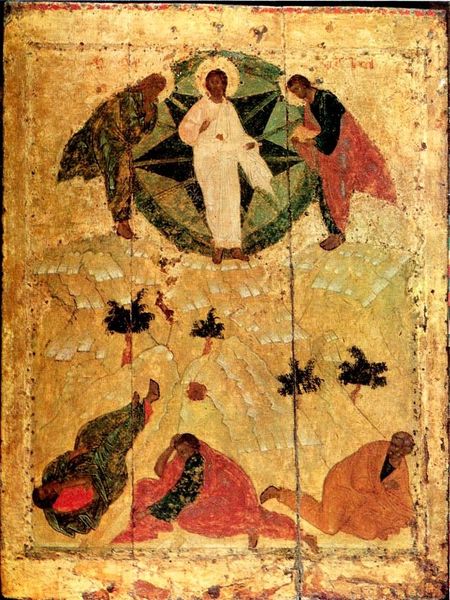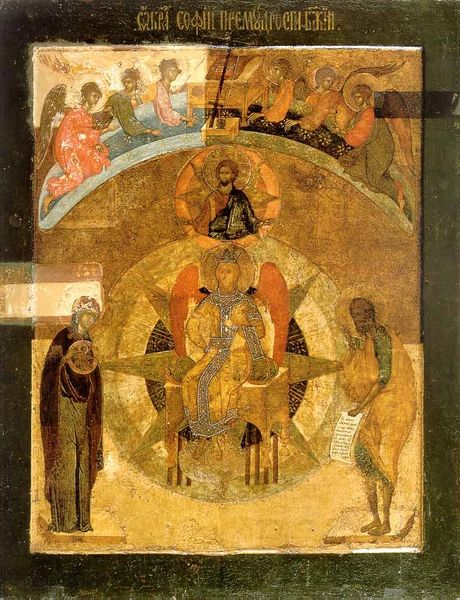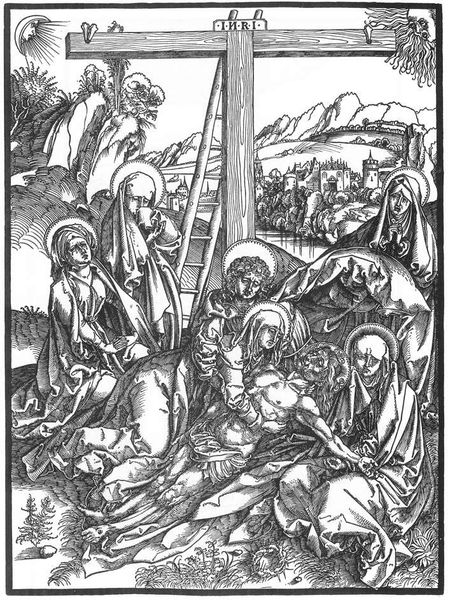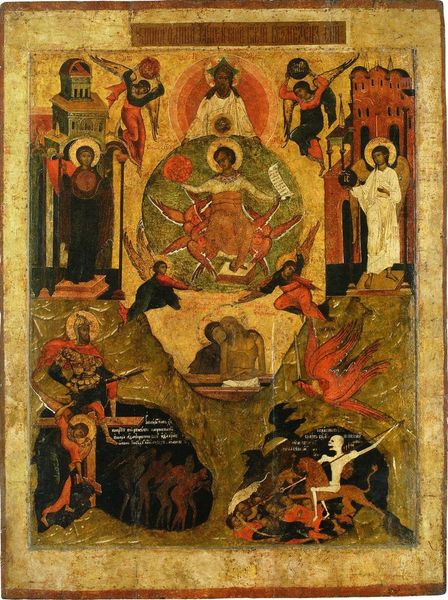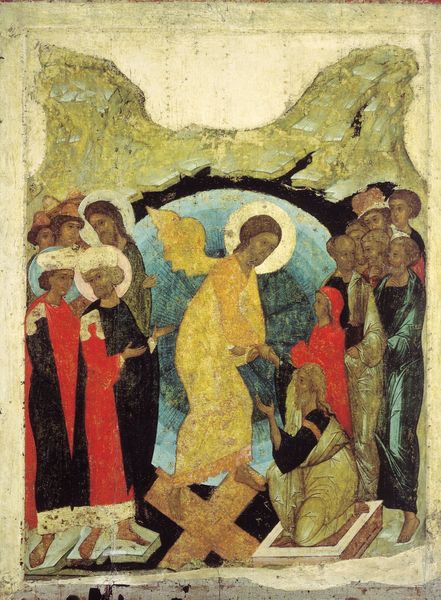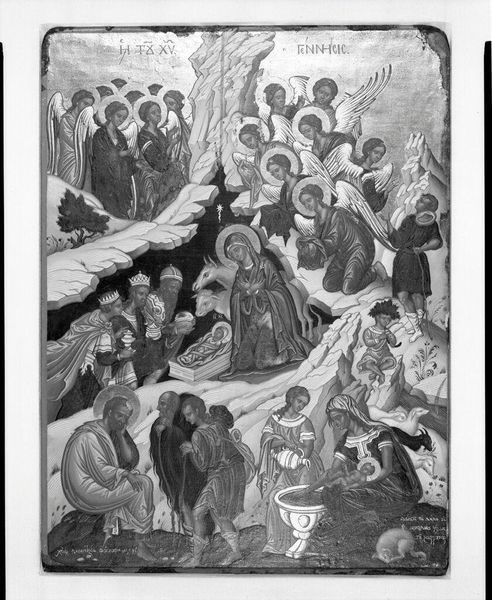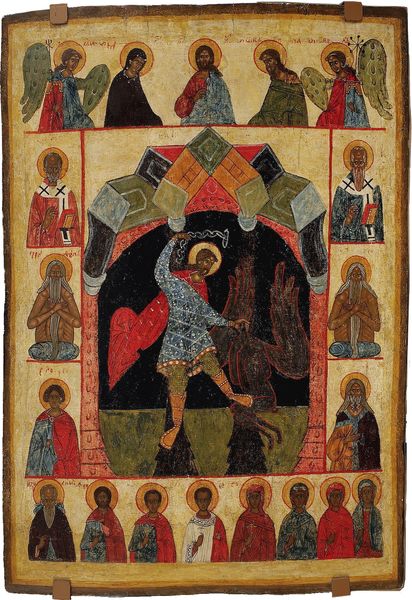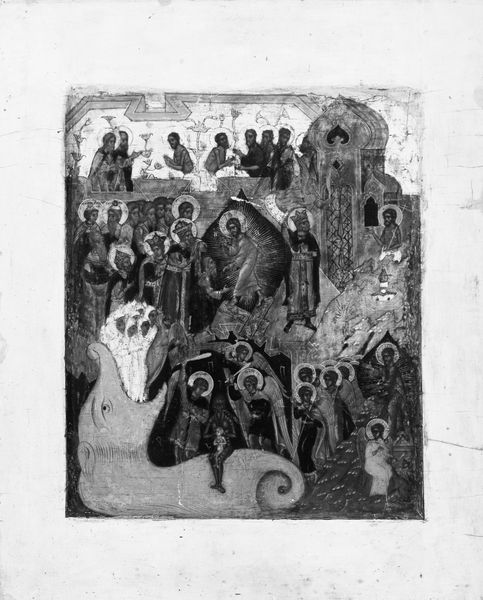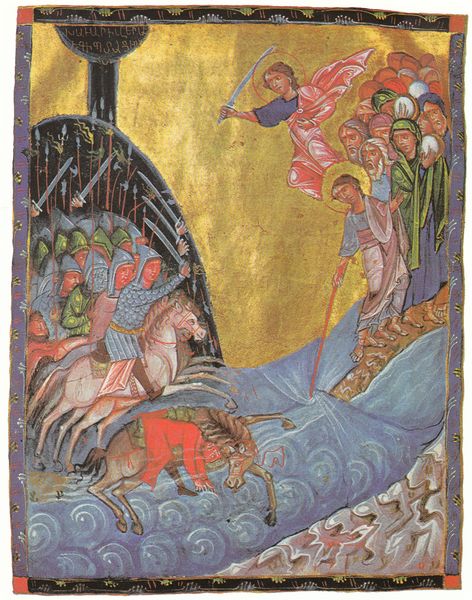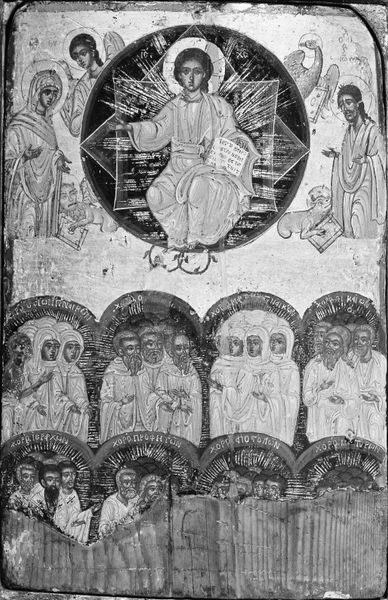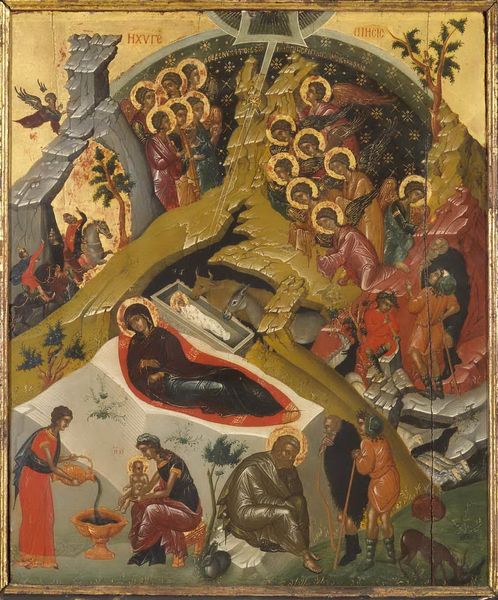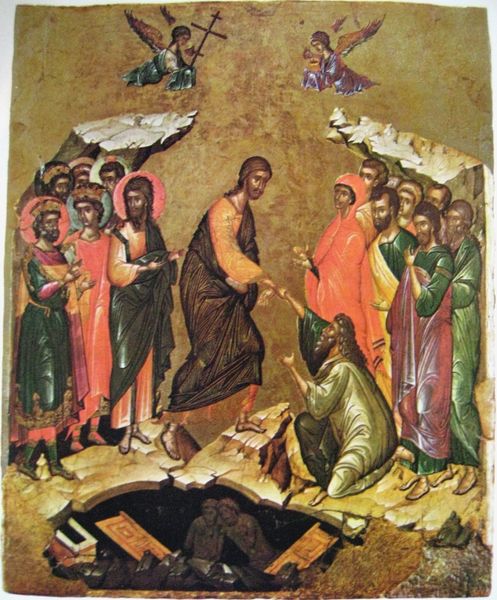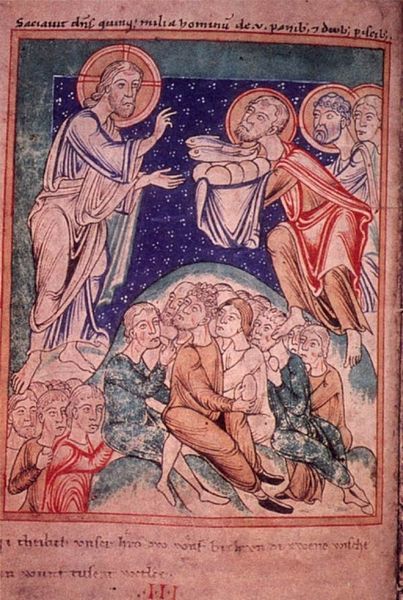
tempera, painting, paper, ink
#
byzantine-art
#
medieval
#
narrative-art
#
tempera
#
painting
#
sculpture
#
landscape
#
figuration
#
paper
#
ink
#
black and white
#
angel
Dimensions: 27 x 23 7/8 in. (68.6 x 60.6 cm)
Copyright: Public Domain
Curator: I'm struck by the upward momentum in this image. The composition really lifts the eye heavenward. Editor: Indeed. What we are observing here is an icon from between 1570 and 1629, held in the collection of the Metropolitan Museum of Art, portraying "Saint Elias's Fiery Ascension." The anonymous artist has employed tempera, ink, and paper in a characteristically Byzantine style. Curator: "Fiery" is certainly the word. Even in monochrome, one feels that vibrant energy. It's less a depiction of a single event and more a symbolic encapsulation of ascension itself. Notice how Elijah's gaze is unwavering, fixed beyond our earthly plane. It makes me think about how iconographers used images not just to tell stories, but to provide windows into deeper spiritual realities. Editor: Precisely, and its worth considering how such images functioned within their historical context. Religious icons like this were not merely decorative; they served as important teaching tools and mnemonic devices for a largely illiterate populace. It helped propagate shared spiritual narratives and consolidate cultural values in the face of shifting political landscapes. Curator: Absolutely. And the symbol of the chariot! Fire wasn’t purely destructive. Its about the transformative process. The horses rising heavenward reference powerful imagery and themes related to ancient solar deities, that were subtly being re-purposed and adapted for a Christian context. What better metaphor for spiritual transcendence than fire, consuming but also purifying? Editor: It also strikes me how this particular composition blends standard Byzantine iconography with other prevalent artistic conventions from the period. See the angel pulling at Elijah’s robe? The figures almost seem staged within a theater—revealing how socio-cultural performances played such a formative role in producing and maintaining social values within the culture. Curator: Yes, that detail of the robe highlights transition—the moment of crossing over, as he leaves something behind for his protégé. Such an intimate gesture, despite the grandeur of the fiery ascent. Editor: In closing, it is incredible to consider the varied political and religious narratives contained in this one iconic image, and the vital function it would have played within a community. Curator: For me, reflecting on the continuous reverberation of certain visual motifs offers such a striking confirmation of enduring human aspirations for enlightenment and the divine.
Comments
No comments
Be the first to comment and join the conversation on the ultimate creative platform.
